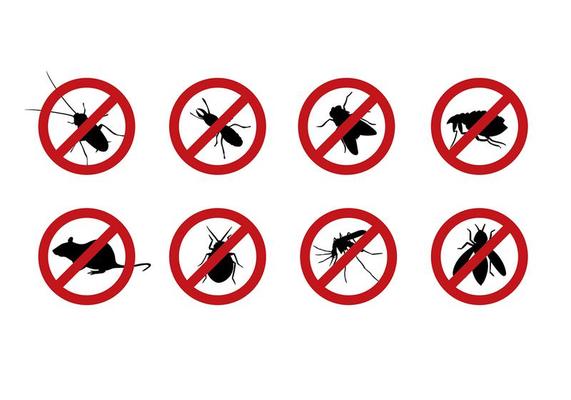Reliable A1 Bed Bug Exterminator Charlotte - Remove Bed Bugs Rapid
Reliable A1 Bed Bug Exterminator Charlotte - Remove Bed Bugs Rapid
Blog Article
Bed Pest Treatment Breakdown: Comparing Chemical Vs. Non-Chemical Solutions
In the world of pest control, specifically when handling the relentless issue of bed bugs, the option between chemical and non-chemical therapy solutions can be an essential one. Both approaches supply unique advantages and disadvantages, affecting variables such as performance, safety and security factors to consider, and total expense. By checking out the nuanced information of each approach, a clearer understanding of which course to go after in dealing with a bed insect problem can be attained.
Effectiveness of Chemical Therapies
Chemical treatments for bed pest problems have been commonly recognized for their potent and quick effectiveness in getting rid of these parasites. When taking into consideration the effectiveness of chemical therapies, it is important to recognize that they can give a detailed and quick option to a bed bug trouble. Expert pest control specialists often count on pesticides to target bed insects at various phases of their life process, consisting of eggs, adults, and fairies. These chemicals usually work by disrupting the bed insects' anxious system, bring about paralysis and eventual death.
Moreover, chemical treatments have the benefit of offering residual results, implying that they can remain to get rid of bed insects also after the first application. This recurring action is especially helpful in combating any type of possible re-infestations. Furthermore, the quick activity of chemical treatments can bring relief to individuals encountering serious bed pest invasions, allowing them to reclaim control of their space rapidly.
Security Worry About Chemical Solutions
One important element that requires cautious factor to consider when utilizing chemical options for bed insect therapy is guaranteeing the security of occupants and the atmosphere. Direct exposure to certain chemicals made use of in bed bug therapies can lead to respiratory issues, skin irritability, or other negative reactions, particularly in people with pre-existing conditions or sensitivities.
Moreover, the environmental effect of chemical services is an additional substantial factor to consider. Some pesticides used in bed insect therapies may be unsafe to helpful pests, wildlife, and environments if they leach into the soil or water systems. It is necessary to make use of chemical therapies carefully, adhering to security guidelines, and considering less poisonous choices to alleviate these threats and ensure the secure and reliable administration of bed insect problems.
Benefits of Non-Chemical Methods
Considering the possible safety worries and ecological impact associated with chemical remedies for bed pest therapy, discovering non-chemical strategies presents an appealing option with a number of distinct benefits. Non-chemical therapies are ecologically pleasant, as they do not add to air or water pollution, making them a lasting choice for bug control.
Additionally, non-chemical solutions can be effective in targeting bed pests, including hard-to-reach areas where chemical therapies may not pass through. Methods such why not look here as warm therapy, vacuuming, heavy steam cleaning, and cushion encasements offer comprehensive obliteration without making use of dangerous chemicals. Moreover, non-chemical approaches can be much less disruptive, needing minimal preparation and permitting quicker reentry into dealt with areas. Generally, selecting non-chemical bed bug treatment techniques not just focuses on safety and ecological security but likewise guarantees thorough and reliable parasite control.
Limitations of Non-Chemical Treatments

Furthermore, non-chemical therapies often need numerous applications to achieve successful removal. This can be taxing and might not constantly ensure complete removal of all bed insects and their eggs, specifically in hard-to-reach or concealed places.
Additionally, the success of non-chemical therapies greatly relies upon appropriate implementation and thoroughness, which can be testing for individuals without specialist know-how. Insufficient application of non-chemical techniques might lead to insufficient obliteration, bring about persistent infestations and the requirement for added therapies.
Consequently, while non-chemical therapies have their advantages, it is crucial to recognize these restrictions and consider them when figuring out the most effective approach for managing bed pest infestations.
Cost Comparison: Chemical Vs. Non-Chemical Options
Provided the constraints related to non-chemical treatments, a vital element to examine in the context of bed insect monitoring is the cost comparison in between chemical and non-chemical choices. Chemical treatments usually entail the application of pesticides by experts, which can vary from $250 to $900 per room, depending upon the severity of the invasion and the size of the area to be treated. In contrast, non-chemical treatments like warm treatment or heavy steam can be extra costly, with prices have a peek at this website varying from $1,000 to $6,000 for a whole home. While the preliminary cost of chemical treatments might appear reduced, numerous treatments might be required to totally get rid of the problem, possibly raising the total cost. On the other hand, non-chemical choices may supply an extra environmentally friendly and sustainable service, although they can be cost-prohibitive for some individuals. Eventually, when taking into consideration the price of bed pest therapy choices, it is essential to weigh the upfront expenditures against the efficiency and lasting sustainability of the selected technique.
Final Thought

Taking into consideration the prospective safety and security worries and environmental effect linked with chemical services for bed bug therapy, discovering non-chemical methods offers a promising alternative with numerous distinct benefits.Given the restrictions connected with non-chemical treatments, a crucial element to assess in the context of bed insect monitoring is the expense contrast in between chemical and non-chemical options. In comparison, non-chemical therapies like warmth treatment check it out or heavy steam can be more costly, with expenses ranging from $1,000 to $6,000 for an entire home. While the preliminary cost of chemical treatments may appear reduced, multiple treatments may be called for to fully eradicate the invasion, potentially raising the total expense.In verdict, when comparing chemical and non-chemical bed pest treatment choices, it is crucial to think about performance, security, advantages, constraints, and price.
Report this page